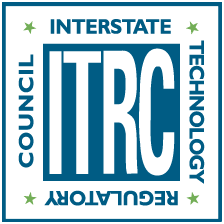Sustainable and Resilient Remediation
Website
NMED oversees the investigation and cleanup of environmental contamination in New Mexico, whether it originate from a spill, old industrial facilities, current operations, leaking underground storage tanks, or other sources.
https://www.climateaction.nm.gov/
Climate
Executive Order
Further New Mexico’s responsibility and opportunity to build a clean energy future for our people, limit adverse climate change impacts that harm our natural and cultural heritage, prevent the waste of New Mexico energy resources and reduce pollution that threatens human health.
https://www.governor.state.nm.us/wp-content/uploads/2019/01/EO_2019-003.pdf
Policy
New Mexico is integrating adaptation and resilience into its climate policies across all state government. The Climate Change Task Force, which spans all state agencies, has developed an initial suite of ambitious policies to accelerate our transition into a clean energy future.
https://19january2017snapshot.epa.gov/sites/production/files/2016-09/documents/climate-change-nd.pdf
https://www.climateaction.nm.gov/wp-content/uploads/2022/05/NMClimateChange_2021_final.pdf
Wildfire
Executive Order
This is an executive order for emergency funds for forestry division of the energy, minerals and natural resources department (EMNRD Forestry’s 1st request for FY 2020)
https://www.governor.state.nm.us/wp-content/uploads/2019/07/Executive
https://www.governor.state.nm.us/wp-content/uploads/2019/09/Executive-Order-2019-028.pdf
This is an executive order for emergency funds for forestry division of the energy, minerals and natural resources department (EMNRD Forestry’s 1st request for FY 2020)
https://www.governor.state.nm.us/about-the-governor/executive-orders/
https://www.governor.state.nm.us/wp-content/uploads/2020/09/Executive-Order-2020-066.pdf
Report
Review of 778 communities at risk and 58 existing CWPPs in New Mexico.
http://www.emnrd.state.nm.us/SFD/FireMgt/Fire.html
http://www.emnrd.state.nm.us/SFD/FireMgt/documents/2018CommunitiesatRiskAssessmentPlan_001.pdf
Website
This website is an interagency effort by federal and state agencies in New Mexico to provide timely, accurate fire and restriction information for the entire state. The agencies that support this site are National Park Service, Fish and Wildlife Service, Bureau of Indian Affairs, State of New Mexico, Forest Service, and Bureau of Land Management.
Interagency all-risk incident information management system to provide the public a single source of incident related information, provide a standardized reporting tool for the Public Affairs community.


